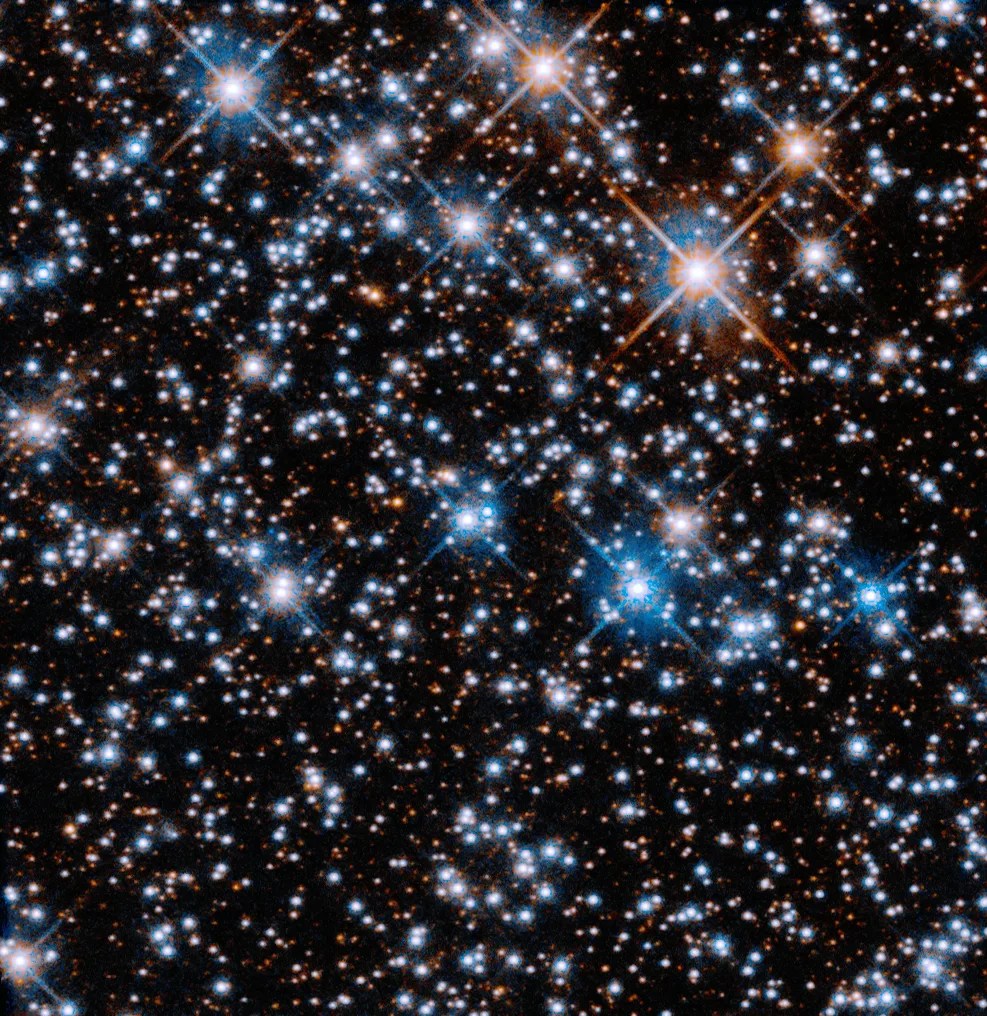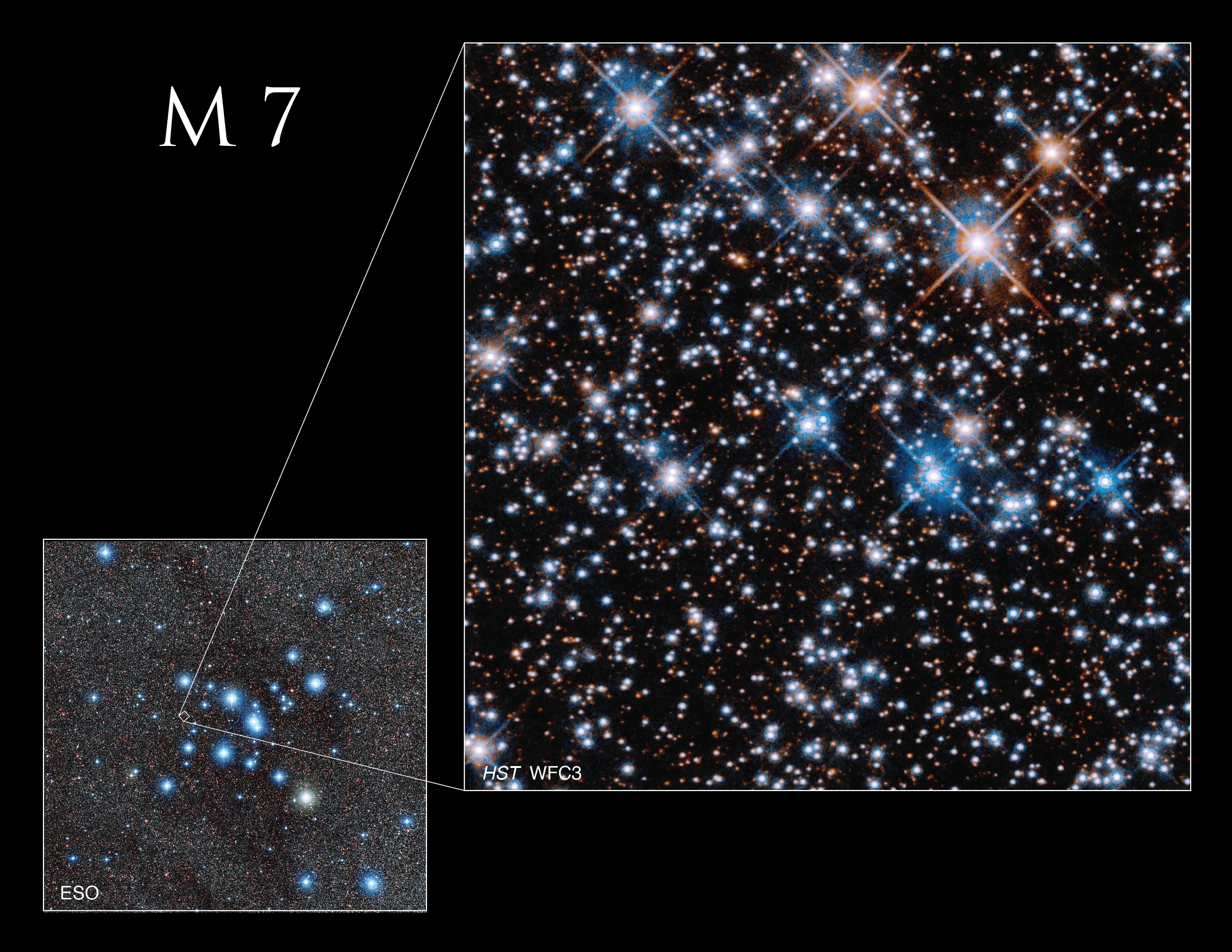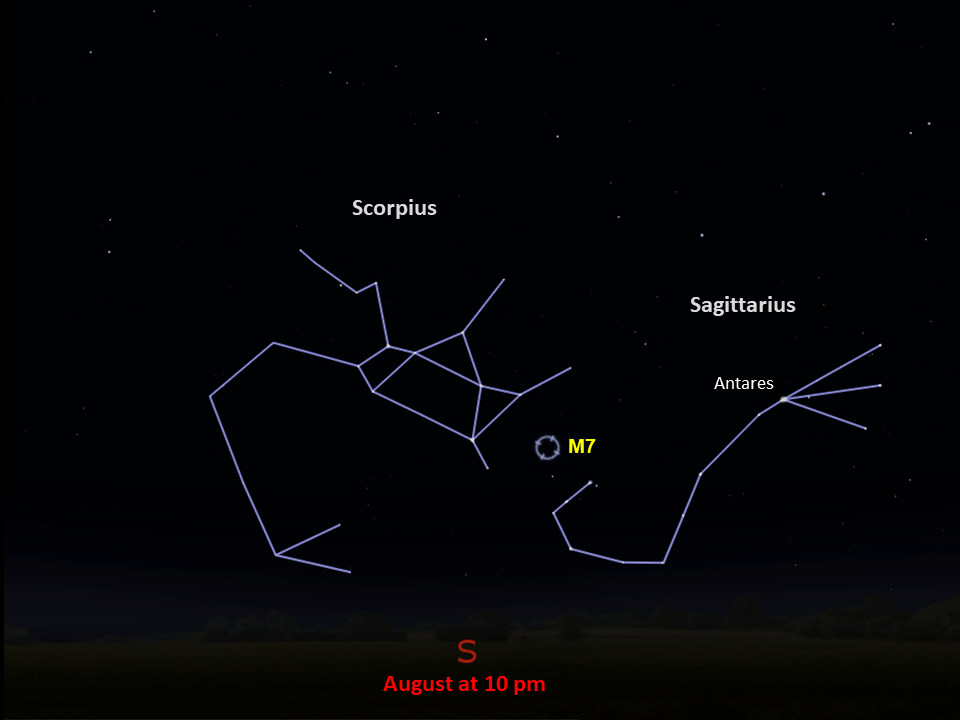Messier 7
This open cluster is the southernmost object in Messier's catalog.
Distance
980 light-years
Apparent Magnitude
3.3
constellation
Scorpius
object type
Open Cluster

Visible right next to the stinger of the scorpion in the constellation Scorpius, Messier 7 is an easy naked-eye target for stargazers in southern latitudes. The second-century astronomer Claudius Ptolemy first recorded this open star cluster in 130 AD, earning it the nickname Ptolemy's Cluster.
Open star clusters contain stars formed from the same initial cloud of gas and dust and are typically irregular in shape. Over time, as open clusters revolve around a galaxy, gravitational disruptions from other cosmic objects can disperse the stars. Ptolemy’s Cluster is one of more than a thousand open clusters in the Milky Way and contains about 80 stars. Residing about 980 light-years from Earth, M7 likely formed about 220 million years ago.
Astronomer Charles Messier added the cluster to his catalog in May 1764. M7 is the southernmost Messier object, making it challenging to see for those in northern latitudes. It is located close to Messier 6, the Butterfly Cluster, and both can be spotted without binoculars or small spotting telescopes. Both M7 and M6 are best viewed from the northern hemisphere around 10 p.m. in July, when the Scorpio constellation is highest in the sky.


Explore Hubble's Messier Catalog
The following pages contain some of Hubble’s best images of Messier objects.

Messier 1 (The Crab Nebula)
Better known as the Crab Nebula, Charles Messier originally mistook Messier 1 for Halley’s Comet, which inspired him to create…

Messier 2
Hubble's image of Messier 2 is comprised of visible and infrared wavelengths of light.

Messier 3
Messier 3 holds more than 500,000 stars.




